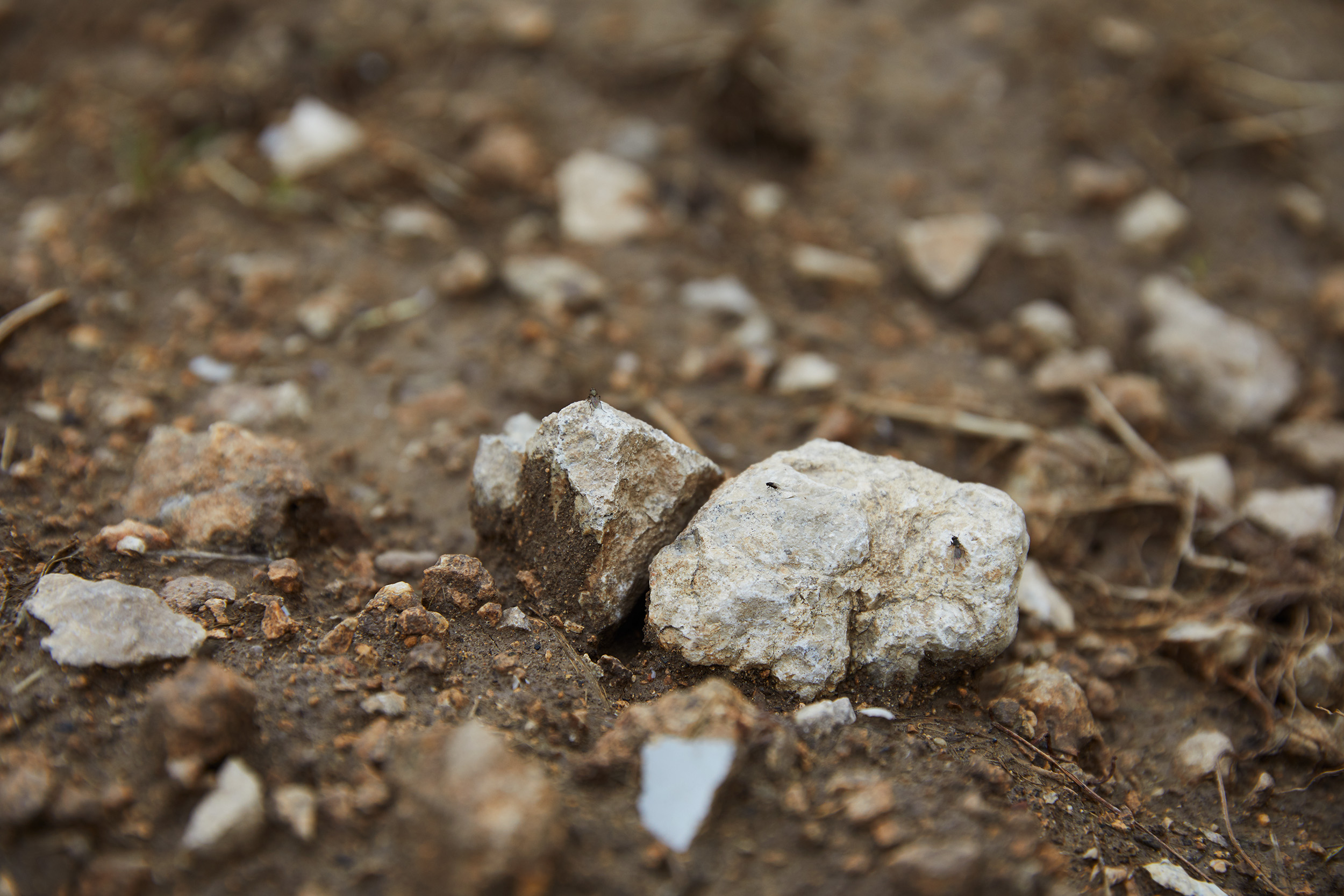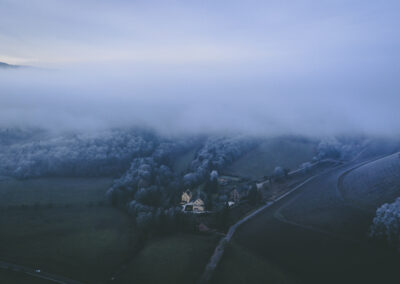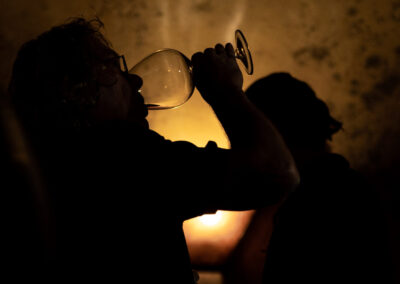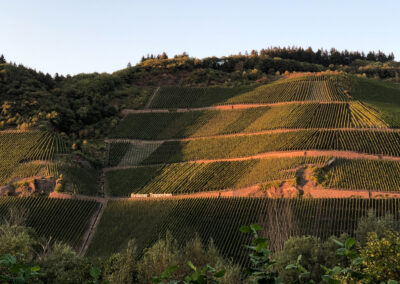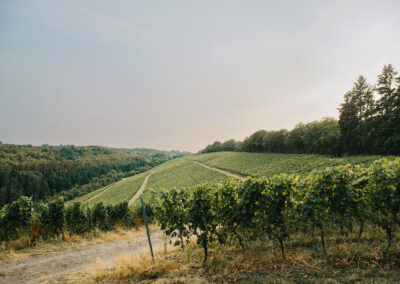In the world of fine wine, it’s easy to focus on grape variety, sweetness level, or region. But when it comes to Germany, soil is one of the most powerful tools you can use to understand and sell texture. Whether it’s the piercing tension of slate-grown Mosel Riesling or the broad, chalky grip of limestone-based Pinot Gris, the tactile sensation of wine, or mouthfeel, is often what makes it unforgettable. This month, we invite you to take a soil-deep dive into four of Germany’s most essential vineyard foundations, and how they bring wine to life.
Soil Snapshot
4 Soils That Define German Wine Texture
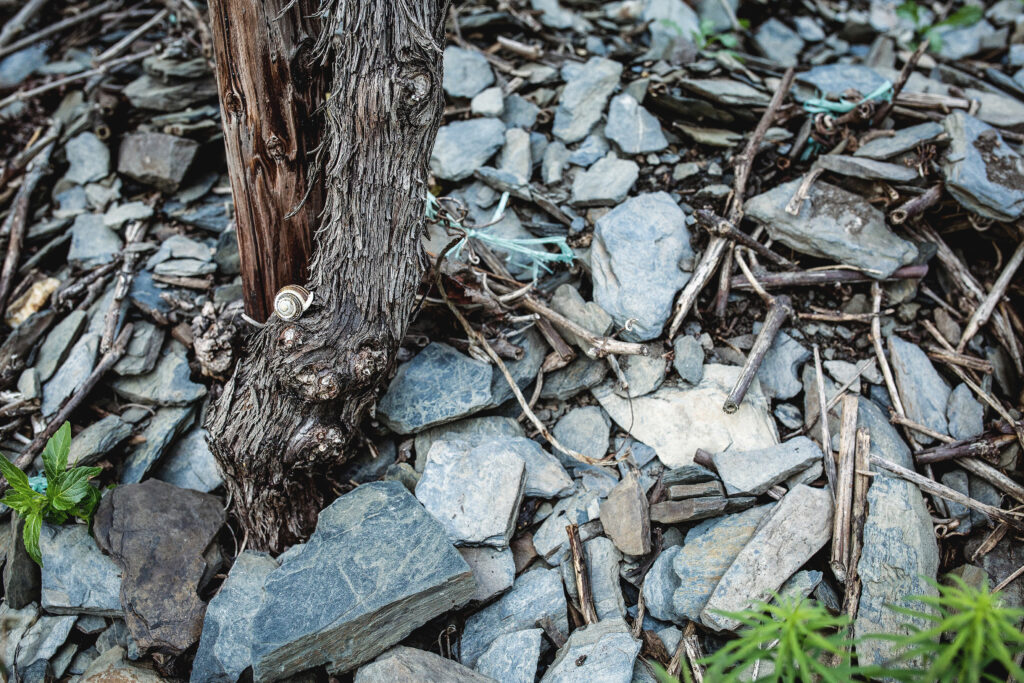
Blue Slate Topsoil in the Wehlener Sonnenuhr Vineyard (Mosel)
In Germany, geology is destiny, and texture is where it’s revealed. Four core soils set the stage: slate for razor-sharp precision, limestone for chalky structure and creamy mid-palate weight, phyllite for spicy grip and phenolic tension, and loess for supple, fruit-forward roundness. Understanding how each substrate shapes mouthfeel gives you a tangible selling point that goes far beyond flavor descriptors or sweetness scales.
Slate
- Region: Mosel, Saar, Ruwer
- Texture: Linear, precise, feather-light
- Producers: Dr. Loosen, Fritz Haag, Maximin Grünhaus, Zilliken, Loosen Bros.
Slate reflects sunlight and retains warmth, helping grapes ripen slowly and evenly on steep slopes. It yields wines that are light-bodied but high in acidity, often with a signature slatey minerality and crystalline finish. Dr. Loosen’s classic Mosel Rieslings are textbook examples: zippy, citrus-driven, and full of tension. Fritz Haag and Maximin Grünhaus capture slate’s linear elegance in their off-dry styles, with just enough fruit to balance the razor edge of minerality.

Soil Examples July 2025 Newsletter v2
Limestone
- Region: Rheinhessen
- Texture: Chalky, structured, creamy
- Producers: Wittmann
Limestone-rich vineyards yield wines with a firm mineral core and creamy mid-palate, supporting both elegance and longevity. It’s a defining feature of many dry Rieslings, Silvaner, and Pinot Noir from Rheinhessen’s new wave: a generation of growers who have transformed the region from bulk production into terroir-driven, sustainable, and cellar-worthy wines –– and Wittmann is leading the charge. The Wittmann estate Rieslings show how limestone amplifies structure. These are wines with clarity, concentration and poise, perfect for cellaring or premium pairings.
Phyllite
- Region: Rheingau
- Texture: Grippy, phenolic, age-worthy
- Producers: Robert Weil
Phyllite is a metamorphic rock similar to slate, but richer in clay and mica. Found in the central Rheingau, it gives wines a spicy depth and firm structure, often resulting in wines with real tannic tension and aging potential. Robert Weil’s dry Rieslings from phyllite-rich soils show power and precision with dense stone fruit wrapped in firm acidity and phenolic grip.
Sandstone & Loam
- Region: Rheinhessen, Pfalz
- Texture: Round, plush, fruit-driven
- Producers: Villa Wolf, Wittmann
This soil is a mix of fine, wind-deposited loam from the Haardt Mountains, layered with weathered sandstone pebbles. It’s deep, fertile and water-retentive, allowing for consistent vine growth and balanced ripening, even in drier years. In the glass, wines from Loess soils tend to be softer in acidity, more fruit-forward, and rounder in texture. The Villa Wolf varietal wines are ideal for by-the-glass programs because they offer easygoing drinkability with just enough texture to feel premium.
Knowledge is Power (and Easier to Sell): Watch & Learn
Explore our library of bite-sized, bingeable videos covering everything from vineyard geology to winemaking philosophy. Perfect for team trainings, wine list write-ups, or a quick refresher. Dive into the tools.
Texture Isn’t Just a Feeling – It’s How the Wine Behaves with Food
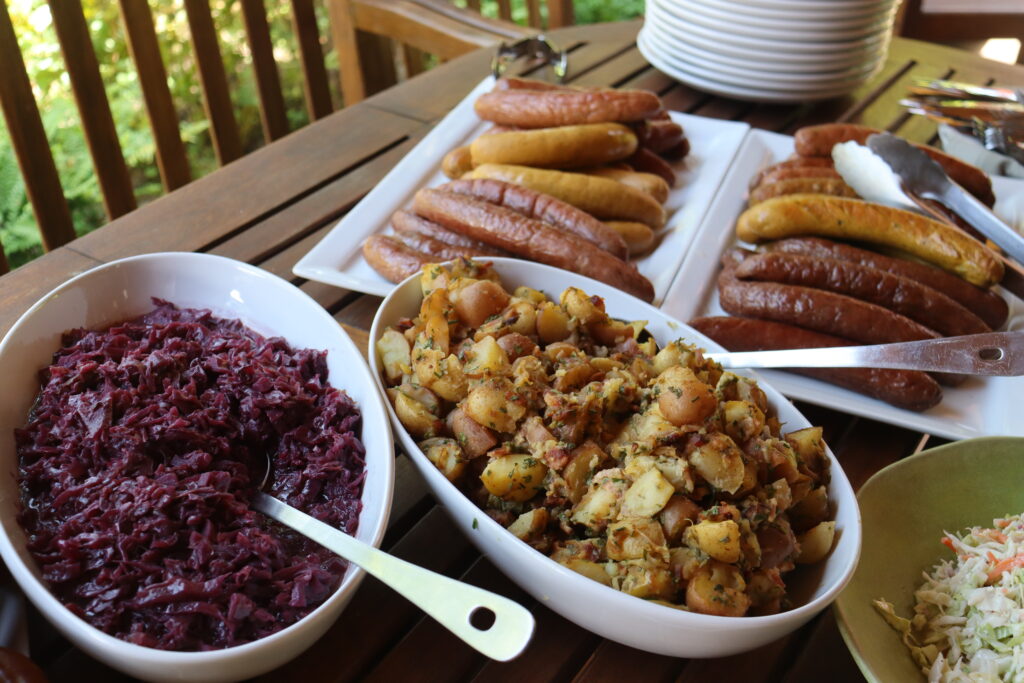
German Cuisine & German Riesling – Simply Delicious!
When it comes to pairing wine with food, texture is just as important as taste. For trade buyers building BTG lists or pairing programs, understanding how a wine feels on the palate can help determine what it works with on the plate. Think of wine texture as its behavior at the table: how it lifts, cuts, cushions, or carries flavors in a dish. German Rieslings offer a range of textures that make them uniquely versatile.
Slate-Based Wines – The Palate Cleansers
With their laser-like acidity and featherweight feel, slate-grown Rieslings are rinsing wines. They scrub the palate between bites, refresh the senses, and elevate raw, fatty, or crispy foods. Pair slate-based wines with oysters, ceviche, fried chicken, pork schnitzel, or tempura.
Limestone-Based Wines – Chalky Charmers
The creamy, mineral-rich feel of limestone wines mirrors the texture of rich dishes and smooth cheeses. They glide into creamy sauces and soft fats with ease, creating harmony without heaviness. Pair limestone-based wines with brie, roast chicken, mushroom pasta, or veal scallopini.
Phyllite-Based Wines – Protein Powerhouses
These wines have the structure and phenolic tension, almost like a white wine with tannins. That gives them a savory, serious presence that stands up to meats you’d typically pair with reds. Pair phyllite-based wines with duck breast, roasted goose, or aged Gouda.
In a market where buyers are overwhelmed by options and consumers are driven by experience, texture is one of the most powerful and underutilized tools in your sales arsenal. Germany’s soils shape not only how the wines taste, but how they feel, and that’s what makes them memorable.
By focusing on mouthfeel, minerality, and structure, you can elevate the conversation beyond sweetness levels and regions, and into something sensory, tangible, and compelling. From the laser precision of Mosel slate to the chalky spine of Rheinhessen limestone, every wine you pour is a chance to tell a story rooted in the land.

